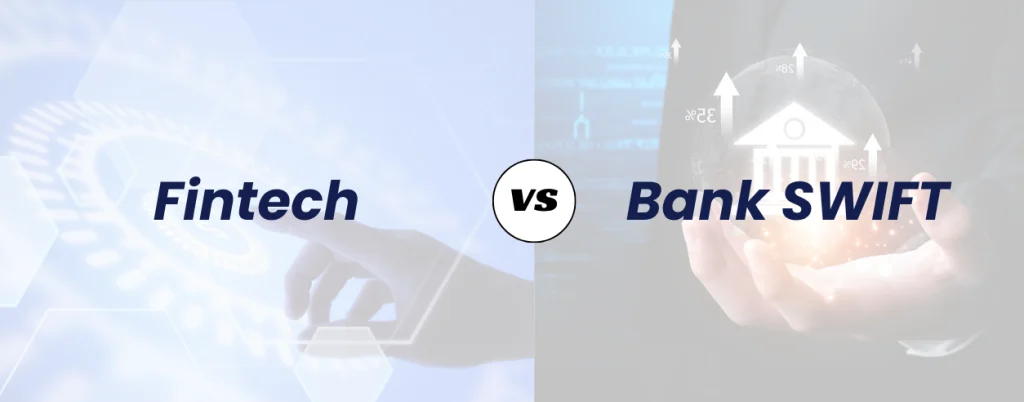Every exporter has lived this story once. You deliver everything — on time, on spec, on the dot — and then the client raises a dispute. Maybe a shipment arrives chipped. Maybe a milestone payment is held “for review.” Suddenly, your money isn’t yours anymore; it’s evidence in a case file no one wants to own.
In that moment, the payment system you chose becomes your courtroom.
Banks treat disputes like legal proceedings — slow, procedural, and designed to protect the institution before the individual. You file a claim, attach proofs, and wait for an invisible committee to decide if your funds deserve to come home. Fintechs and marketplaces, on the other hand, run it more like air traffic control — automated triggers, predefined refund corridors, and resolution timelines that feel like policy, not poetry.
The difference between a bank wire refund and a fintech refund isn’t just time — it’s philosophy. One was built for the age of paperwork, the other for the age of dashboards.
And for exporters trying to navigate export compliance, GST refunds, and cross-border reconciliation, that difference defines how painful a dispute becomes — or how quietly it disappears.
When a Payment Turns into a Problem
A payment dispute or refund usually begins innocently. The buyer claims an overcharge, the goods reach late, or an automated system flags a mismatch between invoice and delivery.
But what follows diverges dramatically depending on how the payment was made:
1. Bank wire: The client contacts their bank, which reaches out to your bank through the SWIFT network. Every step is manual, often requiring proof of shipment, commercial invoice copies, and sometimes letters from customs.
2. Marketplace or fintech: The platform locks the transaction instantly, notifies both parties, and initiates its own dispute-resolution protocol with set timelines and built-in documentation.
For an exporter, that means the same $5,000 dispute can either drag for three weeks or close within three days — depending purely on the rails carrying the money.
How Banks Handle Refunds and Disputes
Banks were built to move money securely, not quickly. Their systems assume that disputes are rare, which is why the process feels like reopening a vault.
| Stage | Bank Wire Process | Exporter Experience |
| Initiation | Buyer’s bank raises a recall request under SWIFT MT192 or MT199 | You are informed via RM or email, often days later |
| Verification | Indian AD bank requests documentary proof of fulfilment | You gather invoices, airway bills, and shipping proof |
| Reversal Decision | Based on mutual agreement or regulatory guidance | Refund may take 7–15 business days |
| FX Re-conversion | USD credited back at prevailing rate, minus intermediary charges | FX loss possible if rates have moved |
| Compliance Update | Requires separate correction to FIRC and export-realisation records | Reconciliation often manual and delayed |
The system is watertight for fraud prevention but painful for exporters who operate on shorter cycles. Refunds are treated as exceptions, not workflows.
That means long loops between operations, compliance, and finance teams — all while your working capital stays locked.
How Marketplaces and Fintechs Manage Disputes
Marketplaces and fintech platforms reimagined disputes as part of transaction design. Their architecture assumes a percentage of cross-border trades will need intervention — so they automate the “what-ifs.”
| Stage | Marketplace / Fintech Workflow | Exporter Experience |
| Trigger | Buyer initiates refund or raises ticket on platform | Immediate alert on dashboard |
| Verification | Platform requests evidence (invoice, delivery confirmation) within fixed window | Upload digitally; system timestamps |
| Refund / Hold Decision | Smart-contract rules or internal review determine resolution | Transparent timeline and visibility |
| Payout Handling | Funds held in escrow or virtual account, released or reversed automatically | Minimal manual steps |
| Compliance Mapping | Auto-update to export record, purpose code, and FIRC if applicable | Real-time reconciliation; no separate filing |
Because these systems integrate compliance logic into payments, refund events no longer require separate export documentation updates — a major gain for import export compliance.
The Compliance Layer That Banks Forgot
Under RBI and FEMA rules, every inward remittance must align with the correct purpose code and FIRC record. When a refund or reversal occurs, that compliance trail must be adjusted — otherwise, your books show export income that never materialised.
Banks handle this through manual corrections:
- The exporter requests FIRC cancellation or amendment.
- The bank verifies the refund via SWIFT messages.
- A revised e-FIRC or negative entry is issued.
Fintechs like HiWiPay automate this. The moment a refund event occurs, the system automatically:
- Tags the transaction as “reversed” under the same purpose code.
- Adjusts export-realisation records.
- Updates your dashboard for export refund under GST linkage.
That automation isn’t just convenience; it’s regulatory hygiene You stay compliant without creating extra paperwork.
GST, Refunds, and the Realisation Clock
Here’s where compliance and tax meet. For exporters claiming GST refunds, realisation of export proceeds is crucial. If a refund or dispute stretches beyond the allowable period, your GST claim can get stuck in limbo.
Traditional bank flow:
Refunded exports need manual reconciliation between the FIRC, shipping bill, and GST refund claim. A mismatch can trigger queries or show up as “unrealised export proceeds.”
Fintech / Marketplace flow:
Refund is digitally tagged to the original invoice; GST export-refund data updates automatically. You maintain a single reference trail that’s visible to both your CA and compliance officer.
That’s how fintech rails quietly protect exporters from administrative penalties without anyone filing extra forms.
The Hidden Cost of a Bank-Handled Dispute
Let’s quantify it.
| Factor | Bank Wire Route | Fintech / Marketplace Route |
| Average Resolution Time | 7–15 business days | 2–5 business days |
| Operational Touchpoints | RM + operations + compliance + finance | Single dashboard |
| FX Exposure | High (conversion on refund day) | Minimal (locked rate or platform spread) |
| Documentation Overhead | Multiple physical/e-mails | Auto-digital |
| Impact on GST Refunds | High risk of delay | Low risk; auto-synced |
| Transparency | Low; bank-to-bank communication only | High; visible workflow |
| Overall Cost | Hidden service + FX loss | Predictable, flat fee |
For a $10,000 refund delayed 10 days with a ₹0.50 FX shift, you lose roughly ₹5,000 — all because your dispute travelled through too many desks.

Dispute Resolution for Exporters: The Fintech Advantage
Fintech rails like HiWiPay aren’t just payment channels; they’re dispute-management ecosystems,
They handle payment, refund, and reconciliation inside one real-time environment:
1. Immediate flagging:Refund requests trigger instant alerts.
2. Evidence layer: Exporters upload proof directly; no email loops.
3. Integrated compliance: Purpose code, FIRC, and realisation status update automatically.
4. Linked GST data: Ready reference for your tax consultant.
5. Faster liquidity recovery: INR restored within 24 hours of resolution.
It’s dispute resolution that behaves more like workflow automation than a back-office procedure.
The Human Element: Trust in Systems
When disputes happen, exporters don’t just lose time — they lose confidence. The anxiety of waiting, emailing, escalating, wondering when “someone” will respond.
The fintech approach restores control. Instead of chasing a relationship manager, you monitor a timeline. Instead of filing letters, you click “upload proof.” Instead of asking for status, you see it live.
That transparency changes the psychology of doing business abroad. It turns dispute resolution for exporters from stress management into process management.
Verdict: Refunds Shouldn’t Feel Like Regressions
In the global trade chain, refunds and disputes are inevitable. What shouldn’t be inevitable is how painful they feel.
Banks built their rails for certainty — they excel at compliance but struggle with agility. Marketplaces and fintechs built theirs for continuity — they align compliance with speed.
For exporters, that means choosing between procedural protection and operational efficiency. The smart route is no longer a compromise. It’s one that gives you both:
fast refunds, full compliance, and clean documentation.
HiWiPay’s architecture does exactly that — resolving faster without cutting corners on export compliance.

HiWiPay — Where Refunds Don’t Derail Revenue
Banks process disputes; HiWiPay prevents them from becoming disasters.
With RBI-grade compliance, flat transparent fees, and automated refund reconciliation, HiWiPay turns the hardest part of exporting — waiting — into the shortest one.
Because the question isn’t whether disputes will happen. It’s whether your system can make them painless.



